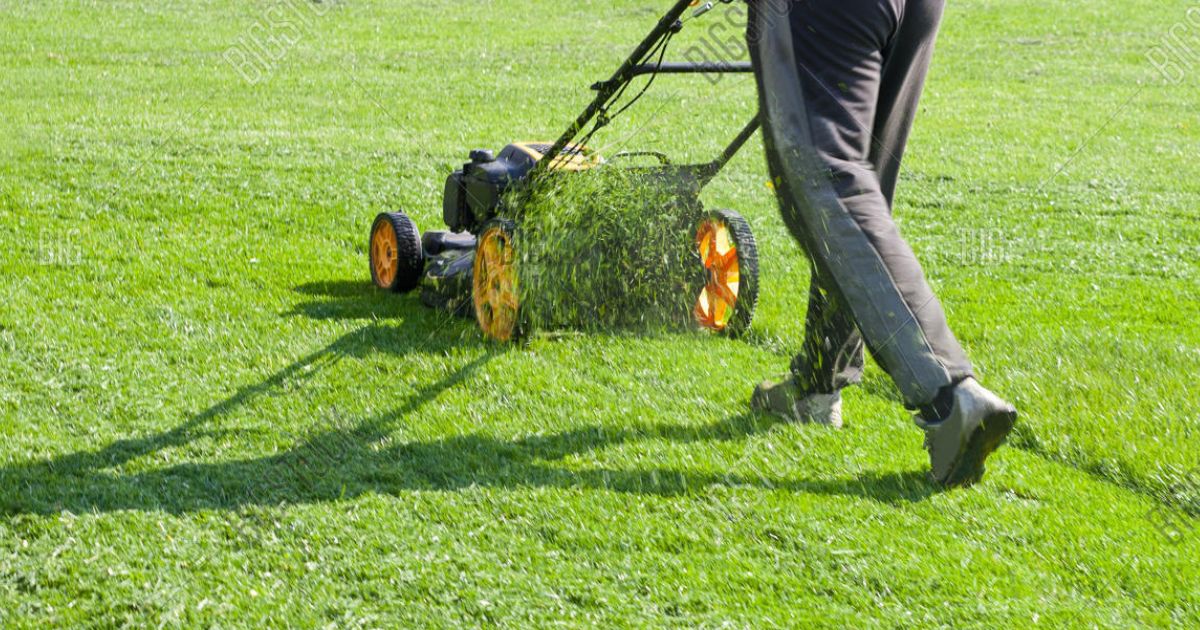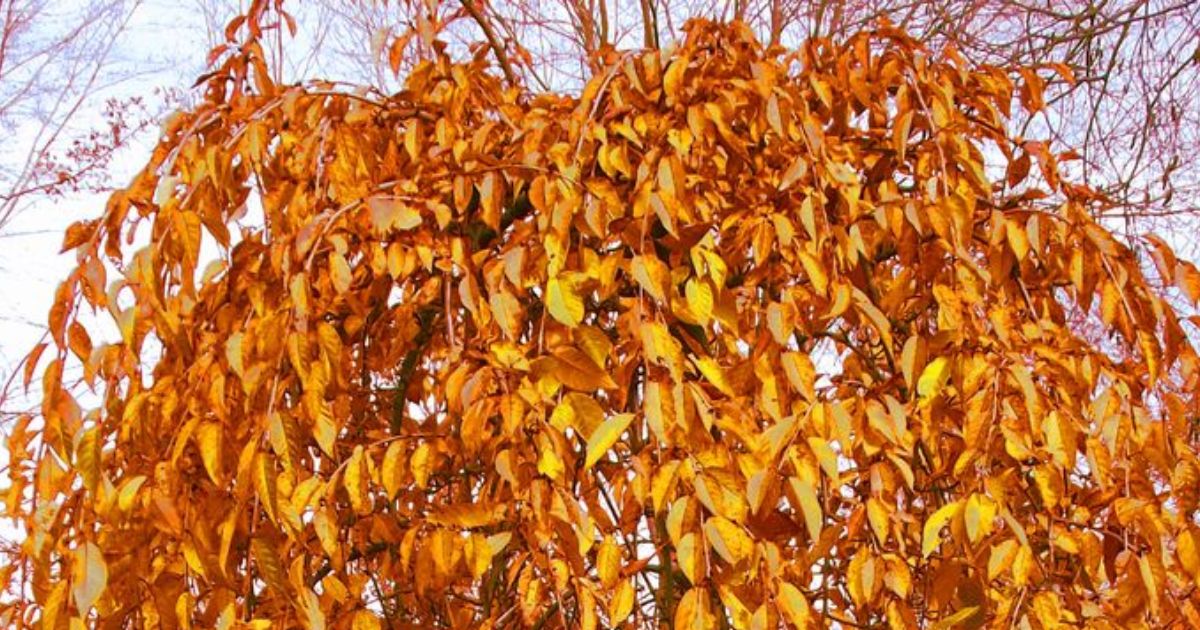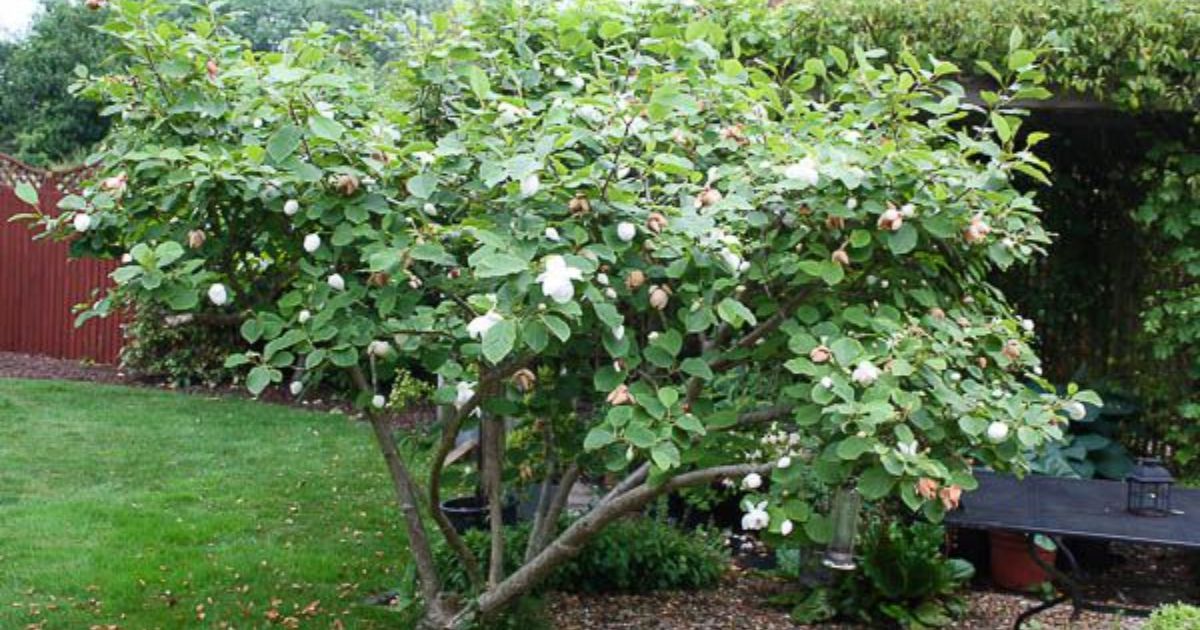A lush, green lawn instantly boosts the beauty of any home, but keeping it that way isn’t always easy. Over time, grass can turn brown, develop bare spots, or become thin and unhealthy due to poor soil, pests, or irregular care. If your lawn is looking more like a patchy field than a soft green carpet, don’t worry, you can fix it!
Restoring your grass doesn’t have to be complicated. With the right approach, you can identify the root cause, repair damaged areas, and revive your lawn. In this guide, we’ll walk you through every step of fixing your grass, from diagnosing the problem to reseeding, fertilising, and maintaining a healthy lawn all year long.
Common Reasons Your Grass Looks Unhealthy
If your lawn has lost its vibrant green colour or developed bare, dry patches, several underlying issues could be to blame. Understanding what’s causing your grass to struggle is the first step to bringing it back to health. Here are some of the most common reasons your grass may look unhealthy:
Lack of Water or Overwatering
Grass needs the right amount of water to thrive. Too little water causes the blades to dry out and turn brown, while excessive water can suffocate the roots, leading to the development of fungal diseases. Why Scarifying Your Lawn Can Fix Grass Problems Fast A healthy lawn typically requires roughly one to one and a half inches of water every week, depending on the soil type and climate.
Soil Compaction

When the soil becomes compacted, often due to frequent foot traffic or heavy equipment, the grass roots can’t access air, water, or nutrients properly. Compacted soil also makes it difficult for new grass to grow. Loosen the soil and improve your lawn by aerating it. Promote healthier root development.
Poor Drainage
If water pools on your lawn after rain, it’s a sign of poor drainage. Standing water deprives roots of oxygen and encourages fungal growth. Improving drainage through levelling, aeration, or soil amendment can prevent these problems.
Pest Infestation or Lawn Diseases
Insects like grubs, chinch bugs, and armyworms can chew through grass roots, while fungal diseases such as brown patch or dollar spot can quickly spread across your lawn. Look for signs such as minor bite marks, patches of dead grass, or mouldy areas to identify these issues early.best way to regrow grass
Too Much Shade or Heavy Foot Traffic
Grass needs sunlight to photosynthesise and grow strong. Lawns shaded by large trees or buildings often struggle to stay green. Similarly, constant walking or playing in the same areas can damage the grass and compact the soil beneath.
Nutrient Deficiency
Yellowing grass or slow growth can be a sign that your lawn lacks essential nutrients, such as nitrogen, phosphorus, or potassium. Testing your soil helps you understand which nutrients are missing, allowing you to choose the right fertiliser to restore balance.
Assessing the Damage
Before you start fixing your lawn, it’s essential to understand the severity of the problem. Not all damaged grass is dead; some may be dormant or suffering from temporary stress. Taking the time to assess the condition of your grass will help you decide whether you need a simple touch-up or a complete lawn renovation.how to repair lawn patches
Identify Dead vs. Dormant Grass
At first glance, brown or patchy grass might look dead, but it could just be dormant, especially after extreme weather. Dormant grass has dry blades, but the roots are still alive. To check, tug gently on the grass:
- If it resists pulling, it’s likely dormant and will recover with proper watering and care.
- If it pulls up easily, it’s dead and will need to be reseeded or replaced with new sod.
Inspect Soil Condition
A good lawn starts with healthy soil. Use a small shovel to dig a few inches into the ground and check:
- Is the soil hard and compacted?
- Is it too sandy or full of clay?
- Does it have a musty smell (indicating poor drainage or fungus)?
To determine your soil’s pH and nutrient levels, Can You Really Install Turf Yourself you can also conduct a soil test. Soil with a pH of 6.0 to 7.0, which is slightly acidic to neutral, is ideal for grass growth.
Check for Pests or Diseases
Inspect damaged areas closely for signs of insects or fungus. Grubs and other pests often live just below the surface, while diseases may appear as circular, brown patches, powdery spots, how to fix grass patches or mould-like growths. Early detection helps you treat these problems before they spread and become more severe.
Evaluate the Extent of Damage
Determine whether the issue affects just a few small spots or large sections of the lawn.
- Minor damage: Spot reseeding and improved maintenance may be enough.
- Severe damage: You may need to dethatch, aerate, and overseed the entire lawn.
Preparing Your Lawn for Repair
Once you’ve identified the cause of your lawn problems, it’s time to prepare the area for repair. Proper preparation sets the stage for new grass to grow strong and healthy. how to fix holes in grass Skipping this step can lead to uneven growth or wasted effort, so take your time to get it right.
Remove Dead Grass and Debris

Start by clearing away any dead grass, weeds, leaves, and other debris from the affected areas. You can use a rake or dethatching tool to lift and remove the thatch layer (the build-up of dead roots and stems). This helps expose the soil, allowing new seeds or sod to make good contact for better growth.
Loosen Compacted Soil
If the soil feels hard or packed down, it’s a sign of compaction. To loosen the soil, use a core aerator or a garden fork. Aerating improves airflow, water absorption, How to Protect Trees and Shrubs in Winter and nutrient movement to the grass roots, creating the perfect environment for new growth.
Add Topsoil or Compost
After loosening the soil, spread a thin layer (½ to 1 inch) of nutrient-rich topsoil or compost over the area. This enhances soil structure and provides essential organic matter for healthy grass development. Mixing compost with existing soil helps retain moisture and promotes root growth and expansion.
Level Uneven Areas
Uneven spots can cause water to pool, leading to poor drainage and root rot. Use a shovel or landscaping rake to fill low spots with soil and gently smooth the surface. Aim for an even, slightly sloped lawn that allows water to drain away naturally.
Ensure Proper Soil Contact
Before seeding or laying sod, lightly tamp down the soil with the back of a rake or your feet to ensure good contact. This helps prevent air pockets and promotes even germination once you add new grass.
With your lawn clean, loose, and nutrient-rich, you’re ready for the next crucial step: reseeding or laying sod to revive your grass.
Reseeding or Laying Sod
Now that your lawn is prepared correctly, it’s time to restore bare or damaged patches with fresh, healthy grass. Whether you choose to reseed or lay sod depends on your budget, how to fill in bare patches in lawn the size of the damaged area, and how quickly you want results. Both methods can help you achieve a lush, green lawn if done correctly.
Choosing the Right Grass Type
Before you start, select a grass variety that matches your local climate and growing conditions.
- Cool-season grasses (like Kentucky bluegrass, fescue, or ryegrass) grow best in cooler regions.
- Warm-season grasses (like Bermuda, zoysia, or St. Augustine) thrive in hot, sunny areas.
- Also, consider how much shade or foot traffic your lawn receives; some varieties are more resilient to stress than others.
How to Reseed Your Lawn
If your lawn has small bare spots or thin patches, Rats in the Garden: 10 Expert Tips to Keep Them at Bay reseeding is the easiest and most cost-effective solution.
Step-by-step reseeding process:
- Rake and loosen the soil in the damaged area to create a smooth surface.
- Spread grass seed evenly, either by hand for small areas or using a seed spreader for larger ones.
- Lightly rake again to cover seeds with a thin layer of soil (no deeper than ¼ inch).
How to Lay Sod for Instant Results
If you want a quick transformation or need to repair larger areas, sod is your best option.
Steps for laying sod:
- Measure and cut sod pieces to fit the damaged areas neatly.
- Lay sod in a staggered pattern, similar to brickwork, to avoid visible seams.
- Press edges firmly together to prevent gaps where weeds can grow.
- Water immediately after installation, ensuring the sod and soil beneath are thoroughly soaked.
- Avoid heavy foot traffic for 2–3 weeks to allow roots to establish.
Within a few weeks, sod will begin rooting into the soil, creating a seamless, healthy lawn.
Watering and Early Care Tips
- Water lightly once or twice daily for the first two weeks.
- Gradually reduce frequency but increase depth as the grass matures.
- Avoid mowing until the grass reaches approximately 3 inches in height.
Once your new grass has taken root, how to patch a lawn it’s time to focus on proper watering and fertilising to support long-term growth and colour.
Proper Watering and Fertilising
Watering and fertilising are two of the most critical steps in keeping your new and existing grass healthy. The right balance ensures strong roots, lush colour, and long-lasting growth. Too much or too little of either can lead to weak grass, yellow patches, or even disease. Here’s how to do it right.
Establishing a Consistent Watering Schedule
Grass thrives when it receives consistent and adequate moisture. Irregular watering can cause stress and uneven growth.
For newly seeded lawns:
- Water lightly 1–2 times a day for the first two weeks to keep the topsoil moist.
- Once the grass sprouts, water less often but more deeply to encourage root development.
For established lawns:
- Water early in the morning (between 6 a.m. and 10 a.m.) to minimise evaporation and reduce the risk of fungal growth.
- Avoid watering wet grass at night; it can attract disease.
Deep Watering for Strong Roots
Shallow watering causes grass roots to grow near the surface, making them more vulnerable to heat and drought. Deep watering, which involves soaking the soil to a depth of approximately 6 inches, How to Prune a Hydrangea in Spring for Healthy Growth encourages roots to grow downward, resulting in stronger and more resilient grass.
Choosing the Right Fertiliser
Fertilisers replenish essential nutrients in the soil that grass needs to thrive. The three primary nutrients are:
- Nitrogen (N) – promotes rich green colour and leafy growth.
- Phosphorus (P) – supports strong root development.
- Potassium (K) – improves overall strength and disease resistance.
Types of fertilisers:
- Organic fertilisers: Made from compost, manure, or natural materials, great for long-term soil health.
- Synthetic fertilisers: Offer quick results but may require more frequent applications.
Always follow the directions on the fertiliser label and avoid over-fertilising, which can burn your grass and harm the environment.
When and How to Fertilise
Timing is key to adequate fertilisation:
- Cool-season grasses: Fertilise in early spring and fall when growth is most active.
- Warm-season grasses: Fertilise in late spring through summer when temperatures are higher.
Apply fertiliser evenly using a spreader, then water lightly afterwards to help nutrients soak into the soil.
Monitor and Adjust
Watch your lawn’s response after watering and fertilising. If you notice runoff, discolouration, or patchiness, adjust your schedule or product type. A healthy lawn should look even, vibrant, and full after consistent care.
With proper watering and fertilising, your lawn will be well on its way to recovery. Next, it’s essential to maintain this condition with ongoing maintenance and preventive care.
Ongoing Lawn Maintenance Tips
Once your grass has started growing strong and healthy again, consistent maintenance is the key to keeping it that way. Regular care helps prevent weeds, pests, and diseases from returning, while ensuring your lawn stays lush, green, and vibrant throughout the year. Here are some essential tips for maintaining your grass the right way.
Aerate Annually
Over time, soil can become compacted again, restricting airflow and water movement. Aerating once or twice a year helps break up compacted soil, allowing nutrients, water, and oxygen to reach the roots more easily. Early spring or fall is usually the best time to aerate.
Watch for Pests and Diseases
Keep an eye out for irregular patches, discolouration, or holes in the soil; these may indicate grubs, fungus, or other issues. Regularly inspect your lawn and address problems promptly before they have a chance to spread.
Feed and Water Seasonally
Adjust your watering and fertilising schedule based on the season and your grass type.
- In hot weather, water deeply and less frequently.
- In cooler months, reduce watering but keep the soil slightly moist.
- Apply slow-release fertiliser 2–4 times a year, depending on your lawn’s needs.
Keep Foot Traffic Under Control
Avoid walking or placing heavy objects in the same spots repeatedly. If your lawn gets a lot of use, consider creating stone walkways or designated play areas to prevent compaction and wear.
Maintain Proper pH Balance

Test your soil annually or every other year to ensure it remains within the ideal pH range (6.0–7.0). If it’s too acidic, add lime; if it’s too alkaline, use sulfur or organic compost to balance it out.
A little effort throughout the year goes a long way toward keeping your grass thick, green, and beautiful. By mowing correctly, watering wisely, and feeding your lawn regularly, you’ll enjoy a vibrant yard that stays healthy season after season.
Conclusion
Fixing your grass isn’t just about making your lawn look good; it’s about creating a healthy environment that thrives year after year. Whether your yard has a few brown spots or looks completely worn out, a little care and consistency can make all the difference.By identifying the root cause of the problem, preparing the soil properly, reseeding or laying sod, and following the correct watering and fertilising routine, you can revive your lawn. Once your grass begins to recover, regular maintenance such as mowing correctly, aerating, and monitoring for pests will help keep it lush and green.
A beautiful lawn doesn’t happen overnight, but with patience and proper care, you’ll soon enjoy a vibrant, healthy yard that enhances your home’s curb appeal and gives you a peaceful, natural space to enjoy.
FAQ
How long does it take for grass to regrow?
The time required depends on the type of grass and the method of repair. Newly seeded areas usually take 7–21 days to sprout, while sod establishes within 2–3 weeks. Full recovery can take several months with proper care and attention.
Can I fix my lawn without reseeding?
Yes, if the damage is minor and the grass is dormant rather than dead, proper watering, fertilising, and aeration may be enough to restore it without reseeding. For larger bare patches, reseeding or sod is usually necessary.
Do I need professional help to fix my grass?
For minor issues, DIY repair is often a suitable solution. However, suppose your lawn problems are widespread and caused by soil issues, persistent disease, or pests. In that case, A professional is better equipped to recognise and address the underlying cause of the problem.
How do I prevent brown patches from returning?
To prevent brown patches, water deeply but infrequently, mow correctly, fertilise seasonally, aerate annually, control weeds and pests early, improve drainage, and reduce heavy foot traffic on the same lawn areas.
What is the best time of year to fix my lawn?
The best time to fix your lawn is late spring for cool-season grasses and early fall for warm-season grasses, ensuring optimal soil warmth, moisture, and growth conditions.





